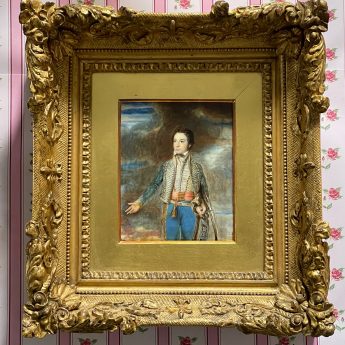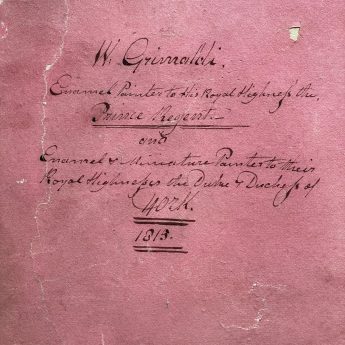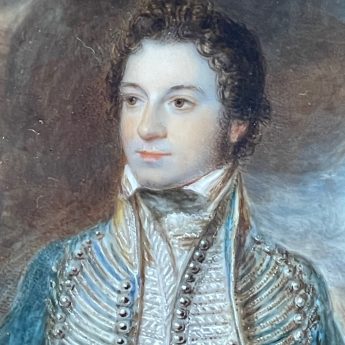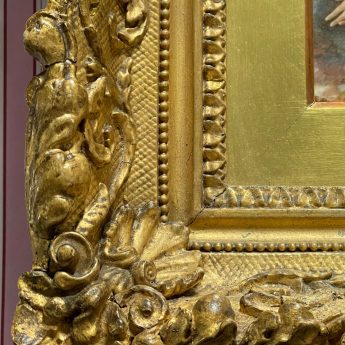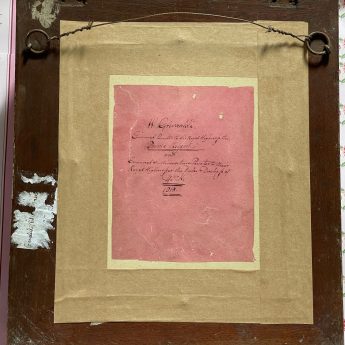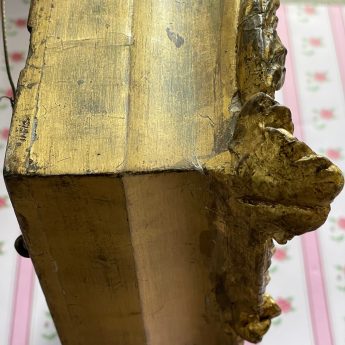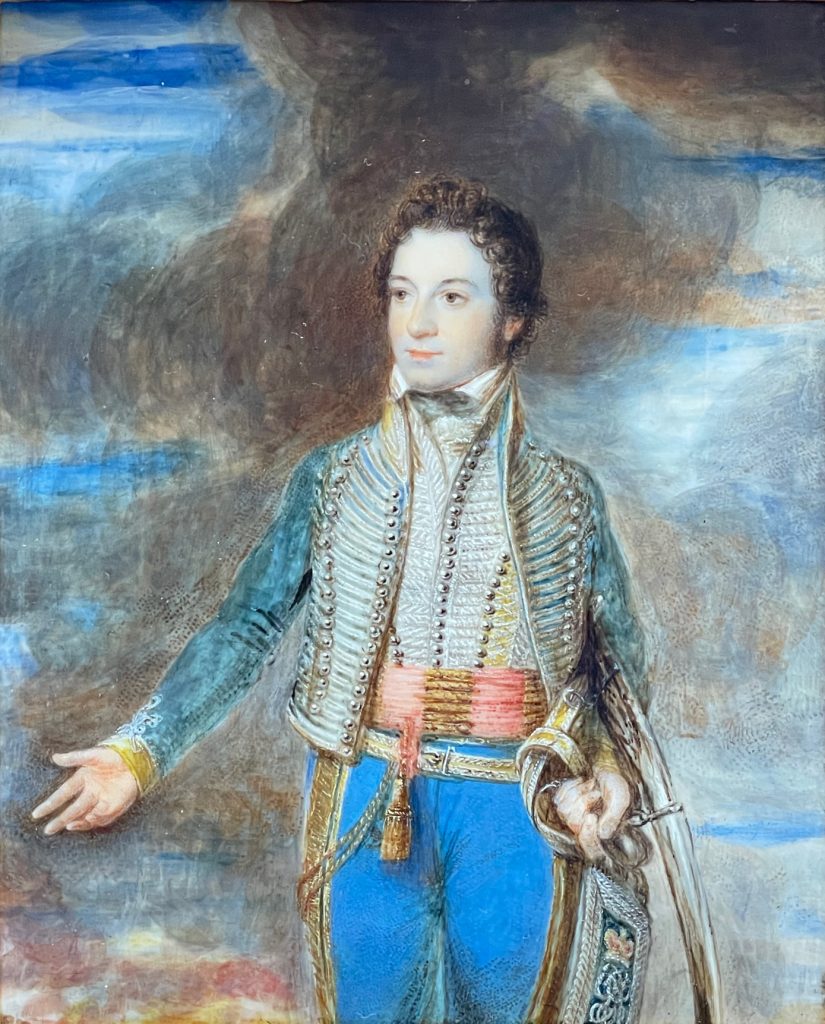
The Young Dragoon
Portrait miniatures, silhouettes, portraits & an omnium-gatherum of historical interest & character.
Enquiries and orders
The Young Dragoon
William Grimaldi
Sold
This impressive ‘cabinet’ sized miniature was exhibited by William Grimaldi at the Royal Academy in 1815 under the title ‘Portrait of an Officer of the Light Dragoons’ and depicts the ambitious 17-year-old Edwin Stacey, sword in hand against an atmospheric sky, wearing the richly braided uniform of the 12th Light Dragoons.
Born in 1794, Edwin was the youngest of nine children born to Flint Stacey (c.1745-1802) and his wife Katherine, née Cruttenden (c.1760-1796), who had married in 1779 at All Saints in Maidstone. The artist William Grimaldi was well acquainted with the Stacey family; Flint Stacey was godfather to Grimaldi’s son. The Staceys were prominent Maidstone brewers and local landowners and Flint was elected mayor of the town in 1792 and 1800. His two eldest sons later joined him in the brewing trade.
Edwin attended Eton College between 1808 and 1811 and, although his father had originally intended him to pursue a career in banking or brewing, he was purchased a cavalry cornetcy in June 1811. As a lad, Edwin would have been beguiled by the handsome cavalry regiments stationed at the nearby barracks.
Stacey was originally gazetted to the 22nd Light Dragoons, a cavalry regiment then serving in India. Three months later he transferred, in the same rank, to the 12th (or The Prince of Wales’s) Light Dragoons. He joined his regiment at Radipole Barracks in Weymouth during October 1811 and trained there for a year. He was purchased promotion to lieutenant in March 1812.
On 13 November 1812, Edwin Stacey and Lieutenant Edward Penfold (who was later to marry his sister) sailed to Lisbon on board Britannia. He joined his regiment as they advanced into Spain and eventually into France during 1813 and saw action at the Battle of Vittoria (21 June 1813) and at the contested crossings of the rivers Nivelle and Nive (10 November and 9-12 December respectively). The 12th Light Dragoons was active in mopping-up operations in the Bayonne-Bordeaux area until the end of the war in April 1814 when they marched north-east to Calais and set sail for England.
Following the declaration of peace, Stacey was placed on lieutenant’s half pay. Remaining on half pay for the rest of his life, this was effectively the end of his military career. In 1848 he was awarded the Military General Service Medal with clasps for Vittoria, Nivelle and Nive in recognition of his service.
At this point Edwin Stacey settled into family life back home in Maidstone. In January 1816 he married Maria, the youngest daughter of local banker and landowner Edward Margesson Penfold. The couple went on to have eight children, all but one of whom survived to adulthood.
The death in 1841 of Edwin’s eldest brother, William Henry, brought Edwin into the family brewing business as a partner. In 1844, he also followed in another family tradition by being elected mayor of Maidstone and later Justice of the Peace. By 1851 the family was living in Stone Street close to the family brewery and it was there that Edwin died on 7 June 1869 at the age of 75. His obituary (Maidstone Journal 14 June 1869) described him as ‘gentle in disposition, courteous and kind to all’.
Handsomely displayed in its original gilded wood and gesso frame, the portrait is inscribed by the artist on the reverse: ‘W: Grimaldi, / Enamel Painter to His Royal Highness the, / Prince Regent. – / and / Enamel & Miniature Painter to their / Royal Highnesses the Duke & Duchess of / York / 1815’.
Although dated 1815, the portrait must have been worked up from a preliminary work by the artist dating to 1811 as the uniform shown was worn by officers of the regiment between 1796 and 1811 whereupon it was altered to a simpler, less costly design. It also seems most likely that the portrait was commissioned to mark Stacey’s transfer to the 12th Light Dragoons in 1811.
The artist William Grimaldi retained his close links with the Stacey Family, painting several family commissions during the 1810s. He was by then at the peak of his career having been chosen as Miniature Painter to the Duke and Duchess of York in 1791, and then to the Prince of Wales (later George IV). Examples of his work can be found in many prominent collections.
Ivory Registration: WWKWXBFN
Item Ref. 9107
Size: 152 x 123mm ; framed, 335 x 306mm x 88mm max.
Provenance: By family descent from ‘Captain’ Edwin Stacey
Exhibited: Royal Academy Summer Exhibition, 1815 (cat. no. 577)
